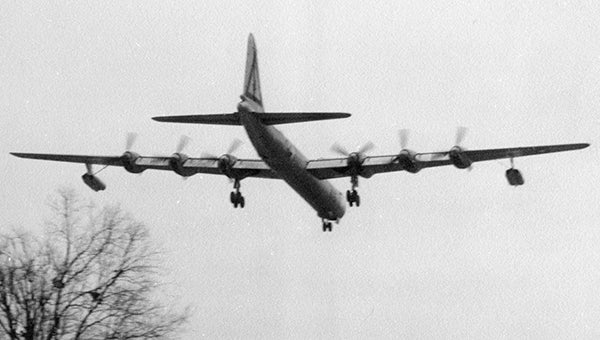Remembering the B-36
Published 9:45 pm Thursday, August 11, 2016
A much younger friend asked me the other day whether I had heard a B-36 fly over. Of course I had, many times, so I began to tell him “all about it.” Fran and our kids know better than to ask me about anything, especially airplanes, because they know the answer will be long and more involved than what they wanted to know. I hope you will indulge me further in this, as I like to remember the mammoth B-36 “Peacemaker” and the many times I encountered it during its day.
My late cousin Bryant Harrill flew the beast when recalled into the Air Force after having flown B-29s from Tinian Island during WWII. Bryant has always enjoyed hero status with me, from the time he built a “soap box racer” and pushed me around the yard in it when I was 4 and he was maybe 12 years old. Later we were in the Air Force at the same time, and I used to spend some weekends in Fort Worth with him and his new family.
But I am getting ahead of my story. When I was at Fort Warren, Wyo., my barracks was out in the boonies south of the main post, close to where the heavy earth-moving equipment guys trained. On Armed Forces Day, I responded to a new sound by going outside just in time to see a B-36 fly directly overhead, low enough that I could not see the whole airplane! It continued on over to the main drag of the post, flying between me and the huge garrison flag flying for the holiday. I shall never forget the sound of that monster bird with its six engines driving pusher propellers, mounted behind the wing.
Trending
Some years later, Bryant took me out to Carswell AFB where his airplane was parked on the ramp. Each airplane had an armed guard, who took a dim view of our approach. Bryant showed the guard his name stenciled on the airplane and told him we were going aboard. We went first up to the cockpit and later the waist, also gazing up into the cavernous bomb bays. Bryant explained everything as I sat in the pilot’s seat and tried to take it all in.
I was most impressed by the oscilloscope at the flight engineer’s station . . . the engineer spent the last two hours of any flight checking the pattern of each cylinder in turn, noting which of the 6 x 4 x 7 = 168 cylinders had fouled plugs so the mechanics needed to change only those before the next flight.
Bryant let me ride his motorbike when I visited, and one day I saw a lot of black smoke rising from the air base. We raced out to the base in time to see a B-36 completely engulfed in flames, the magnesium center section so intensely white hot that it was impossible to look at it. The guard said that he had heard a noise something like that just before a nearby lightning strike and turned to see a landing gear strut go up into the wing as the plane came crashing down. The 30,000 gallons (three railroad tank cars) of fuel took a while to burn off, and there was nothing left of the plane worth saving.
On each May Day during the 50s (Communist holiday, not the Cinco de Mayo celebrated in Mexico) General LeMay put up every B-36 that could fly, all over the world. I remember seeing them at various times during the day, at all altitudes, going in all directions. Gave Ivan something to think about, no doubt. The big bird was aptly named, because peace did prevail during those “Cold War” years!






